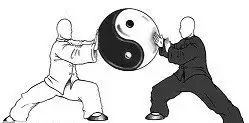

Fire Needle Therapy for Ankylosing Spondylitis

Traditional Chinese Medicine (TCM) recognizes ankylosing spondylitis as a condition related to “bone bi” and “kidney bi” as discussed in the Huangdi Neijing. Ankylosing spondylitis can be categorized under TCM’s “bi syndrome”. TCM posits that “wind, cold, and dampness combine to form bi”, which are external causes of bi syndrome. Insufficient congenital kidney essence and a deficiency in the governing vessel are key factors in its onset, with wind, cold, dampness, and heat being the inducing factors, also related to blood stasis and obstruction of the governing vessel. Clinical epidemiological studies indicate that modern ankylosing spondylitis primarily presents with damp-heat obstruction, kidney yang deficiency, and blood stasis obstruction, with damp-heat obstruction and kidney yang deficiency being the main patterns, while blood stasis obstruction is often a secondary pattern.
Etiology and Pathogenesis
(1) Insufficient congenital endowment or lack of nourishment acquired later, such as nocturnal emissions, excessive sexual activity, and overexertion, lead to a deficiency of the righteous qi and the invasion of pathogenic factors. The kidneys store essence, produce marrow, and govern the bones, serving as the organ of strength. The liver and kidneys share a source, nourishing the tendons and bones together. When the kidneys are deficient, the marrow cannot be filled, and the true qi becomes weak. If the three pathogenic factors, such as cold and dampness, predominate, they can deeply invade the kidneys, which are associated with cold water. The cold and dampness can resonate with the kidneys, deeply invading the bones, leading to muscle spasms, bone relaxation, and joint deformities that hinder flexion and extension.
(2) Insufficiency of the governing vessel: The governing vessel is linked to the kidneys, and when cold and dampness deeply invade, both the kidneys and governing vessel are affected. The governing vessel is the sea of yang meridians, originating from the lower abdomen. If the governing vessel is insufficient, not only can cold and dampness harm the kidneys, but it can also damage the governing vessel, leading to lower back pain, hip and leg discomfort, and difficulty walking, eventually resulting in spinal curvature and rigidity, making it difficult to bend or extend, even leading to “the buttocks replacing the heels and the spine replacing the head.”
(3) Damage from the six excesses: This primarily involves the invasion of cold and dampness. The internal retention of cold and dampness, coupled with kidney yang deficiency, weak qi and blood, and qi stagnation and blood stasis, results from external pathogenic invasion. When yang qi is obstructed, the movement of qi and blood becomes weak, leading to obstruction of the meridians and loss of nourishment to the bones. Consequently, qi stagnation and blood stasis occur, leading to insufficient yang qi, internal dominance of cold yin, and stagnation of qi and blood, which fails to warm the limbs, resulting in muscle spasms, bone relaxation, and joint deformities, making walking difficult.
(4) Invasion of damp-heat toxic pathogens: Due to excessive heat-seeking behavior, yang transforms into heat, damp-heat accumulates and injures yin essence, damaging the liver and kidneys, leading to loss of nourishment to the tendons and bones, gradually resulting in bone bi. Pathogenic toxins, such as those from medications, invade internally, damaging the liver, kidneys, and spleen, disrupting the functions of the organs, leading to dysfunction in the ascending and descending of qi, and over time, resulting in liver and kidney depletion. The liver governs the tendons, and the kidneys govern the bones; the tendons and bones are interconnected. Sufficient liver blood nourishes the tendons and bones, allowing for normal joint function. Prolonged illness can burden the kidneys, leading to kidney yang deficiency, and the spleen fails to provide warmth, resulting in insufficient qi and blood production, hindering bone growth. Due to the interdependence of yin and yang, kidney yang deficiency leads to a lack of source for the generation of yin essence, resulting in deficiency of both qi and blood, and depletion of kidney essence, leading to bone atrophy and osteoporosis over time. Insufficient spleen qi leads to a lack of source for qi and blood production, causing muscle spasms and difficulty in flexion and extension, eventually resulting in ankylosing spondylitis.
Western medicine considers this disease a difficult and complicated condition to cure. The author has clinically applied fire needle and fine needle therapy to multiple patients with ankylosing spondylitis, using fire needle puncture at the Jiaji points and fine needle techniques at points such as Hegu (合谷), Quchi (曲池), Taichong (太冲), and Zusanli (足三里), achieving excellent results. Patients with a shorter duration of illness can be completely cured.
Conclusion: The efficacy of fire needle therapy combined with Chinese herbal medicine for treating ankylosing spondylitis is significantly superior to that of Western medicine, with fewer side effects, simplicity, and high patient acceptance.
 Nationally recognized medical professional qualification certificate
Nationally recognized medical professional qualification certificate
 Official website available for verification
Official website available for verification


Warm Reminder:
This platform shares health-related graphic and textual information
For reference, learning, and communication purposes only
This article is not a basis for medical diagnosis
Please operate and use under the guidance of a physician

This article is organized and published by Ling Su Guan


Ling Su Guan
A platform for learning Traditional Chinese Medicine
Please long press the QR code to follow

